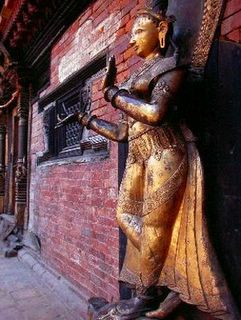

I have been an Africaphile for as long as I can remember and so, when I chanced upon Michela Wong's new book "I Didn't Do it for You", I jumped at it because it dicusses
Eritrea, which is a place seldom written about. In a very concise and informative manner the book takes you through the creation of Eritrea, describes some living relics of Eritrea's past, the Eritrean people, it's civil war and finally, how Eritrea along with Britain, Italy, America etc. betrayed itself to become the pitiful country it is today.
In order to put forth an informative synopsis of the book, I have garnered bits of reviews from The UK Guardian, The Economist and Andrew Price's piece in The Nation:
Wrong relates a history that began when the British suggested (1886)the Italians might like to start getting themselves an empire, and offered up the Red Sea port of Massawa, hoping by this ruse that the Italians would prevent French influence spreading out from Djibouti.
Italian colonialism seems to have involved murder of the local potentates and then the confiscation of their land and women.
Italian rule took a decidedly worse turn with the rise of fascism: Eritrea was the first country to pass a set of apartheid laws, and was used as the launch pad for the 1936 invasion of Ethiopia.
Eritrea was liberated along with Ethiopia by the British in the second world war, and things continued pretty much as before until 1950, when the question of what to do with it was handed over to the United Nations, which allowed itself to be persuaded by
Emperor Haile Selassie of Ethiopia, Eritrea's western neighbour, that Eritrea had no rights of its own and should come under his imperial flag.
Not surprisingly, Haile Selassie, an absolute monarch, broke all his promises to protect Eritrea's fledgling democracy. He abolished not only the parliament, but also education in anything but his tribal language, Amhara, and set about terrorising the Muslim lowlanders when they complained. Haile Selassie's flirtation with America took on an added glow at the height of the cold war after it was discovered that Eritrea's topography made it the best place on earth to receive and transmit radio signals, and that it was particularly well suited to allow America to monitor traffic to and from Russia, Israel, Egypt, Libya and the rest of the Middle East. America took out a 25-year lease on a site on top of the Hamasien plateau and built Kagnew, its biggest eavesdropping installation anywhere, for which it eventually paid Ethiopia more than $360m in military aid as rent.
It seems fitting that this book should come out 20 years after the Ethiopian famine, which - in stark contrast to Eritrea - everyone knows about. As was said of the Irish potato famine: nature creates hunger, but only man creates famine. And so it was in 1984. While we know there was famine, many of us have no idea why. Somehow, through all the news broadcasts and pop concerts and images of thankful Ethiopians, no one thought to mention that the famine was largely being caused by the brutal dictatorship of
Mengistu Haile Mariam, who ended up leading the coup against a senile Haile Selassie.
Wrong, who is remorseless when it comes to the failings of the Italians, British and Ethiopians, is positively gushing in her depiction of Eritrea's freedom fighters, whom she likens to the Spartans of ancient Greece. Admittedly, they benefit from the comparison to their opponents. In 1974 Selassie was overthrown by a military junta known as the Derg. After some infighting, an army colonel named Mengistu Haile Mariam emerged as the Derg's leader. Elite Ethiopians scoffed at Mengistu's dark skin and diminutive stature, but the insecure dictator proved ruthlessly effective at eliminating enemies. When the Americans cut off aid, Mengistu embraced Communism--he capped one memorable rally by smashing a Coca-Cola bottle filled with blood--winning the favor, and the arms shipments, of the Soviet Union.
Mengistu's well-equipped army drove Eritrea's separatist rebels into an impenetrable mountainous region known as the Sahel. There, they hunkered down and trained, building an elaborate network of schools, hospitals and factories, which were often literally situated underground. Wrong describes this exilic period as a utopian moment: Uneducated villagers took literature classes in caves; a self-taught chef whipped lentils into delicacies; a rebel pianist played recitals under thorn trees, amid the bombs. Female fighters sported Afros, and their children, called "Red Flowers," were communally raised. The "absence of worldly distractions," Wrong writes, "encouraged a clarity of thought the meditating monks of Shangri-La would have recognized."
In 1991 the Soviet Union disintegrated, and Mengistu fell, worn down by the Eritrean rebels and an allied movement of highland Ethiopians led by Meles. Two years later, in a referendum, Eritreans voted overwhelmingly for independence. Isaias became president. This was the period during which Wrong first visited the country. In retrospect, she writes, this was to be "Eritrea's golden era, when everything seemed possible." She met newly minted government ministers who dropped references to Samuel Pepys and Charles Darwin. She heard that
President Isaias, an ascetic fellow, was sometimes glimpsed doing his own shopping along Liberation Avenue.
Then came
Badme. If the border war (1998)with Ethiopia seemed senseless and spiteful, Wrong writes, this was largely because it was a family spat. Meles and Isaias had a similar ethnic background; they were even rumored to be blood relations. In the bush, Meles had been Isaias's protégé. But after the war, the dynamic changed. Meles ruled a far larger and more powerful country. "They were brothers, certainly, but a touchy younger brother can easily come to hate a patronizing older sibling," Wrong writes.
Eritrea marched to war with Spartan assurance. It retreated badly defeated. Thousands of soldiers perished, and with them any hope for democracy. Since 1998 Eritrea has degenerated into a paranoid hermit state. Opposition political parties are banned, as are gatherings of more than seven people. Dissenters are jailed. Internet cafes are watched. Foreign aid has dried up. Last year the government kicked out the BBC correspondent, the last Western journalist in town. Wrong reports that Isaias is often drunk, and has taken to head-butting underlings who dare utter a word of disagreement. Presumably, he doesn't do his own shopping anymore.
In her closing chapters, Wrong describes this changed country, which she compares to Ceausescu's Romania, and ventures an explanation for its decline. As usual, history is to blame. "If Eritrea today so often comes across as dangerously imperious to criticism and bafflingly quick to anger," Wrong writes, "she is largely that way because colonial masters and superpowers made her soIn other words, she is asserting that history builds national character, but might there not be other factors at play--ones that implicate Eritrea's rulers themselves?
As Eritrea faces the challenges of making a nation out of a national movement, it is still to be seen whether its mulish and self-reliant people can rediscover the extraordinary inner strength they demonstrated as a fighting rebel army.















